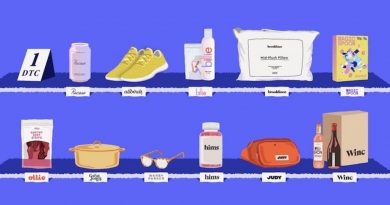Adobe Reports Online Holiday Sales – WWD
U.S. consumers spent a total of $211.7 billion online from Nov. 1 to Dec. 31, 2022, in a holiday season marked by heavy discounting and high inflation, according to software giant Adobe.
The $211.7 billion figure represents a 3.5 percent year-over-year gain and set a new record for e-commerce during the holiday season, Adobe Analytics reported Thursday.
Still, the rate of online spending increases is slowing from recent previous years as many shoppers returned to visiting physical stores after being cooped up at home and glued to their computers due to the pandemic. Traffic at stores last December across the U.S. rose double-digits but remained lower than 2019, pre-COVID-19 levels.
“At a time when consumers were dealing with elevated prices in areas such as food, gas and rent, holiday discounts were strong enough to sustain discretionary spending through the entire season,” Vivek Pandya, lead analyst for Adobe Digital Insights, said in a statement Thursday. “The big deals drew in consumers and drove volume, helping retailers who were challenged with oversupply issues, particularly in categories such as apparel, electronics and toys.”
“Shoppers hit the buy button all season long: 38 days surpassed $3 billion in daily spend this holiday season, on par with 2021,” Adobe reported. “By comparison, only 25 days in the 2020 season surpassed $3 billion.”
Adobe’s analysis covers more than 1 trillion visits to U.S. retail sites, 100 million stock keeping units and 18 product categories. It suggested significantly less retail growth than Mastercard, which on the day after Christmas reported that U.S. retail sales, excluding automotive, increased 7.6 percent year-over-year this holiday season, running from Nov. 1 through Dec. 24. The Mastercard SpendingPulse measures in-store and online retail sales across all forms of payment and is not adjusted for inflation.
“This holiday retail season looked different than years past,” said Steve Sadove, senior adviser for Mastercard and former chief executive officer and chairman of Saks Inc. “Retailers discounted heavily but consumers diversified their holiday spending to accommodate rising prices and an appetite for experiences and festive gatherings post-pandemic.”
Cyber Week — the five days between Thanksgiving and Cyber Monday — was “a key contributor” to holiday 2022 shopping, driving $35.3 billion in online sales and growing 4 percent year-over-year, Adobe said.
With the U.S. inflation rate last year through November standing at 7.1 percent, it would appear that there was no real growth at retail last holiday season. However, Adobe maintained that while its figures are not adjusted for inflation, “if online inflation were factored in, there would still be growth in underlying consumer demand.…This holiday season, strong consumer spending online has been driven by net-new demand, and not simply higher prices.”
Also, the Adobe Digital Price Index (DPI), which tracks e-commerce prices across 18 categories, shows that prices online fell year-over-year since September 2022.
Overall, Adobe said Americans last holiday season were “resilient” in shopping online, with particularly strong demand for toys, where online sales grew 206 percent in the November to December 2022 period, from October 2022. Video games rose 115 percent and apparel/accessories rose 94 percent from October 2022 to the November to December 2022 period.
More specifically, from last October into the November to December stretch, watches were up 108 percent; baby toys rose 101 percent; gift cards, up 98 percent; cosmetics, up 90 percent; outdoor grills, up 86 percent; speakers, up 76 percent, and smart home products rose 67 percent.
Top sellers online this holiday season included Legos, Hot Wheels, Paw Patrol, LOL Surprise, Squishmallows, Bluey and Cocomelon for toys. Top gaming consoles included Nintendo Switch, Xbox Series X and PlayStation 5, while top games included God of War, Madden 23, FIFA 23 and Call of Duty. Other top sellers this holiday season included Apple Airpods, Roku devices, air fryers, vacuums and umbrella strollers.
In other holiday 2022 trends cited by Adobe:
- Forty-seven percent of online sales came through smartphones, compared to 43 percent in 2021. Christmas Day set a new mobile record, driving the majority of online sales at 61 percent, up from 58 percent. “For years, retailers have struggled to move the needle on mobile shopping, and the strong growth this season shows that investments made in improving the experience are beginning to pay off,” Adobe indicated.
- Buy now, pay later (BNPL) orders rose 4 percent compared to 2021. Revenue, however, decreased by 2 percent, indicating that shoppers are increasingly using BNPL for smaller shopping carts.
- Curbside pickup was used in 21 percent of online orders, among retailers offering the service, down slightly from 23 percent the year prior. From Dec. 22 to Dec. 23 (right before Christmas Eve), curbside pickup peaked at 42 percent of online orders “with anxious shoppers using the service to get gifts in time. Curbside has cemented itself as a major fulfillment method, providing brick-and-mortar retailers new ways to drive value from their physical storefronts,” Adobe indicated.
- Across major marketing channels, paid search remained the biggest driver of sales for retailers this holiday season with 29 percent of online sales attributable to that channel. Direct web visits (19 percent), organic search (17 percent), affiliates/partners (16 percent), and email (15 percent) were also major contributors. Revenue directly attributable to social media remained at less than 3 percent of total sales this season, but that share has grown 24 percent year-over-year.
Separately, Shopify issued a list of bestselling products at U.S. retailers on the Shopify platform in terms of percentage growth from the third quarter of last year, defined as July to September, to the fourth quarter, meaning October to December. The list indicated:
- Puzzles up 113 percent, specifically jigsaw puzzles up 121 percent.
- Duffel bags, up 106 percent.
- Video game consoles rose 80 percent; home game console accessories jumped 271 percent.
- Cookware and bakeware, up 156 percent.
- Yoga- and pilates-related items, up 113 percent.
- Toys, up 62 percent.
- Jewelry, up 57 percent.

